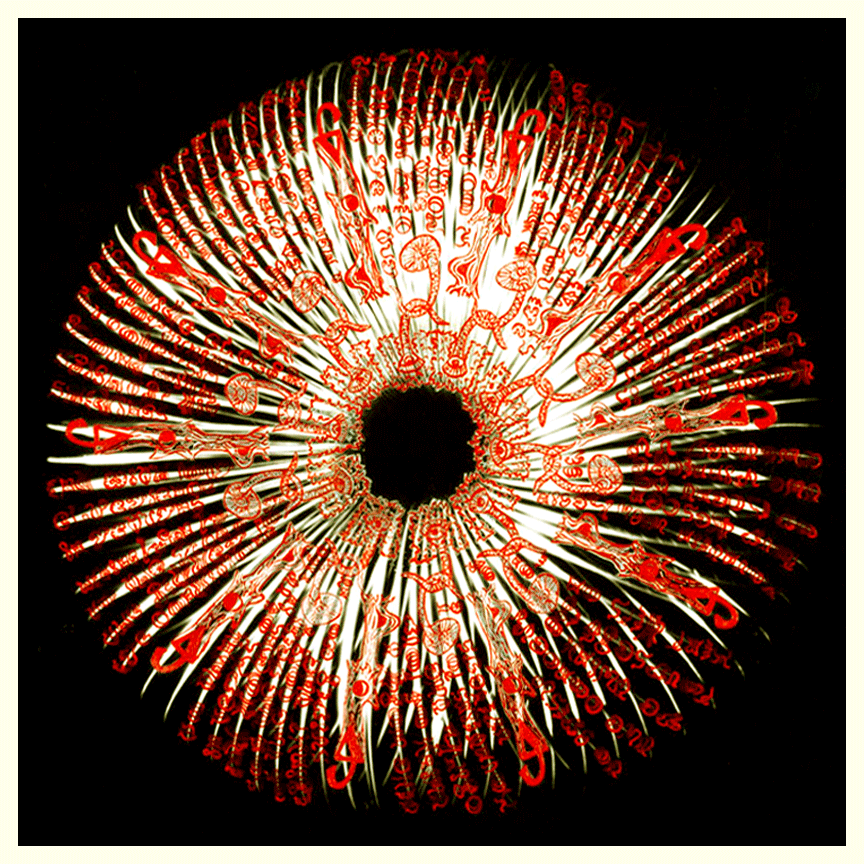The Annunciation Poets Scroll
2005-06, Ink and Acrylic on Washi; 12 x 58 inches
Despite Suzanne Langer's observation that
"There are no happy marriages in art — only successful rape*,"
poets, painters, and engravers have managed to combine
their work in a variety of interesting ways.
The rarest occurrence — and also one of the
most complex
is composite art, a fusion of writing and visual images
from the hand of the same artist.
William Blake, generally agreed to be the greatest poet-painter, created a startlingly
wide range of compositions that vary
from engraved poems with little illustrative accompaniment to ambitious visual images with minimal verbal reinforcement.
Even when word and image age closely intertwined
(as in some of the more successful
Songs of Innocence and Songs of Experience,)
the precise function
of this composite form is not necessarily consistent.
The illustration may reinforce the meaning of the poem,
or it may complicate or undermine it
(as in many states of "The Tyger");
it is also possible that the poem will penetrate and frame it.
In their interdependence of word and image, Blake's designs represent a provocative
reworking of the traditional emblem
in which motto, verse, and engraving all serve to illuminate
the same idea.
*From The New Princeton Encyclopedia of Poetry and Poetics, under Visual Arts and Poetry, pps. 1360-61










